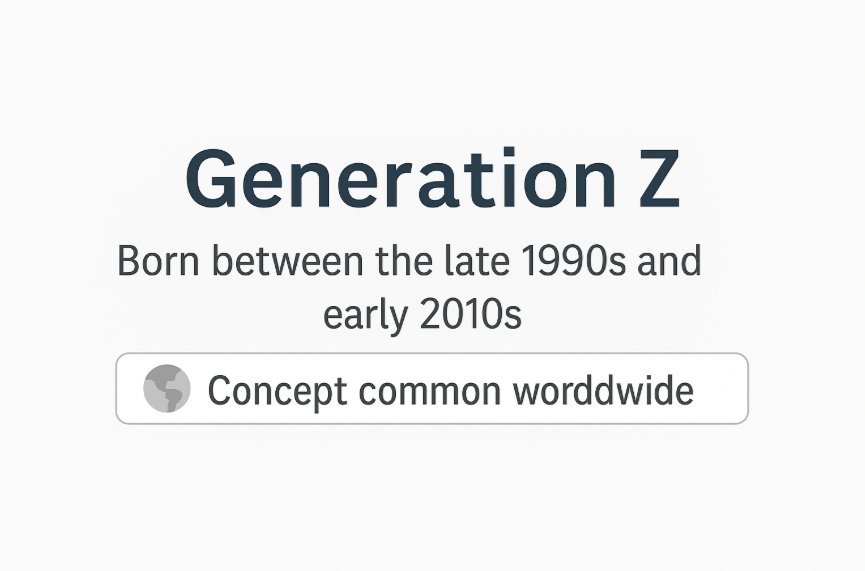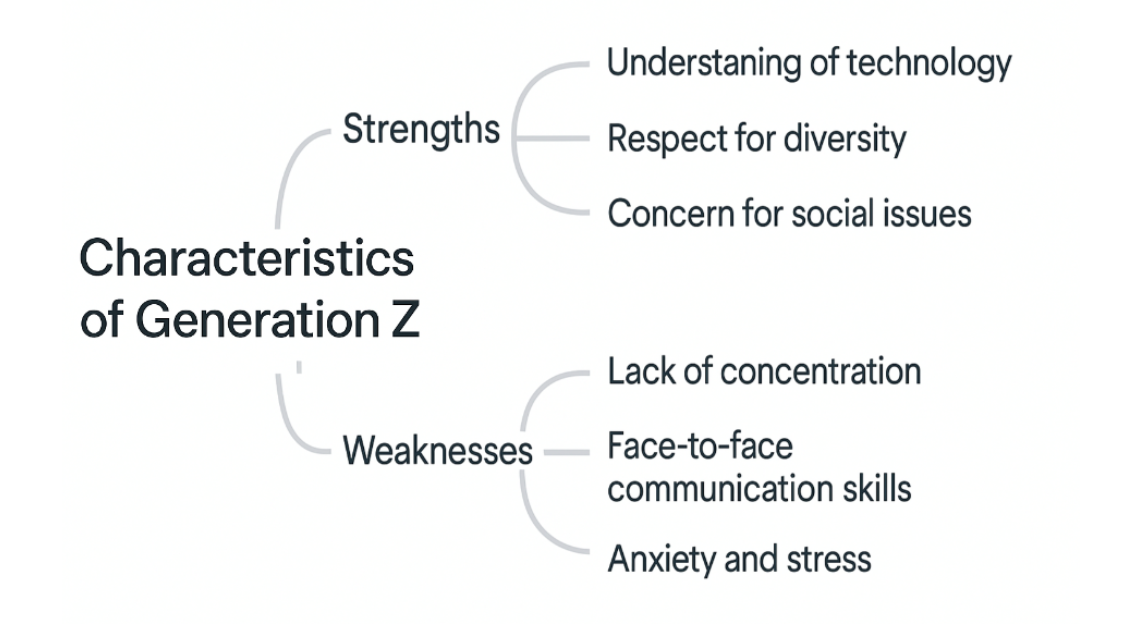
August 18, 2025
How Should We Work with Younger Generations? Rethinking Leadership for a New Era
Across industries, one workplace concern seems to resonate with many: How should we relate to younger generations at work?
Of course, every generation has faced similar concerns. But in recent years, a new wave of employees with different values and expectations has entered the workforce, making this issue more important than ever.
This article explores common struggles and generational characteristics to consider what modern leadership should look like.
Common Concerns About Younger Employees

Here are some of the concerns I frequently hear from managers and older colleagues:
1.They don't take advice well
- It's hard to get through to them.
2.They have short attention spans
- Staying focused for long periods seems difficult.
3.Their sense of time is different
- Older workers are strict with time; younger ones appear more relaxed.
4.They don't follow rules
- There's a lack of awareness around workplace rules and etiquette.
5.Their expectations about workload and quality differ
- There's a gap in how much and how well they think they should work.
6.They think differently
- Their opinions often clash with those of their superiors.
7.They cry or get upset easily
- Some supervisors find this attitude frustrating.
Of course, this list reflects the perspective of senior employees. From the younger generation's viewpoint, these same issues likely look very different. Also, not every young person fits these descriptions. Individual personality and experience matter too. But at a broader level, each generation does tend to share certain traits. Understanding those trends can offer valuable insights.

Why is it so hard to understand the younger generation?
So why communication with younger coworkers can be so difficult? One major reason may be: We're unaware of just how different their culture is.
If the cultural differences were clear, we could respect them...
When we meet someone from another country or culture, say, an expat or a returnee, it's easy to understand that they think and act differently. We understand and respect their actions and thoughts that differ from our own. But, how about the younger generation? It is difficult to show the same understanding and respect toward them.
This is because we assume that they share the same cultural background as us. As a result, when the actions or thoughts of the younger generation do not align with our expectations, we may feel frustrated, irritated, or even unjustly treated.
To avoid such misunderstandings and friction, it is helpful to recognize that the younger generation has a different culture. Different upbringing. Different technologies. Different values. Just recognizing that difference is the first step.

What is the "Generation Z" with a different culture?
A helpful way to understand this is the concept of "Z sedai (generation)"--those born in the late 1990s to early 2000s.
Japan has had its own generational labels: baby boomers, the "new breed" generation, the bubble generation, the "lost" generation, the "yutori" (relaxed education) generation, and so on, but the Z sedai is slightly different from those.
Z sedai is not a reflection of Japanese society, but rather a Japanese translation of the term "Generation Z" (those born in the late 1990s to early 2000s) coined in the West. Generation Z can be considered a global concept.

Generation Z has a different cultural background from previous generations in that they grew up in an environment where the internet and social media are an integral part of daily life. They place importance on sharing information in real time, freely expressing their opinions, and respecting diversity.
Strengths and weaknesses of Generation Z
Here are some general strengths and weaknesses associated with Generation Z:

[Strengths]
●Understanding of technology:
Gen Z grew up in an environment where digital technologies such as the internet, social media, and smartphones are part of everyday life. As a result, they can quickly understand and utilize new technologies.
●Respect for diversity:
Gen Z tends to respect diversity in terms of race, gender, sexual orientation, and other factors. This is an important value for creating a more inclusive and equitable society.
●Concern for social issues:
Gen Z tends to be highly interested in social issues. This is due to the ease with which they can share their opinions and information on social media.
[Weaknesses]
●Lack of concentration:
Gen Z has a habit of consuming information quickly due to the spread of smartphones and social media. This indicates that they may lack long-term concentration.
●Face-to-face communication skills:
While Gen Z is accustomed to digital communication, they may struggle with traditional communication styles
●Anxiety and stress:
Gen Z has grown up in a digital society flooded with information and may feel anxiety and stress due to information overload.
Again, not all individuals fit these patterns. But recognizing these general traits can help avoid feeling frustrated or unreasonable.

A new form of leadership
A "different approach" is necessary to facilitate smooth communication with Generation Z. Here, based on my own experience, I would like to consider a new form of leadership.
A) Give up
First, I would like to propose a stance of "giving up (in a constructive way).
Giving up may have a negative connotation, but it can also be used as a 'positive' mindset for building better relationships. Actively acknowledge that "the cultural environment in which they have been raised is different," and accept that 'it is simply impossible for them to adopt the same way of thinking or values as you."
By fully embracing this 'acceptance," you will no longer feel frustrated, you will develop a sense of respect for them, and most importantly, you will feel more at ease.
B) Shift to a coaching approach
Next, the specific communication method to focus on is "Coaching."
There are two main types of leadership: top-down and coaching.
✓Top-down leadership:
Top-down leadership is a style where the leader holds decision-making authority and communicates instructions and policies to subordinates. This style is particularly effective when consistency and efficiency are necessary to achieve organizational goals. But it may also suppress the creativity and autonomy of subordinates.
✓Coaching leadership:
Coaching-style leadership is a style in which leaders support the growth of their subordinates and aim to help them maximize their potential. This style aims to improve organizational performance by enhancing the abilities of subordinates and promoting self-actualization.
Generation Z tends to value self-expression and seek respect for their opinions. Compared to traditional top-down leadership, coaching-style leadership is more likely to allow both supervisors and subordinates to work with less stress.
C) Listen directly to needs
Finally, the third point is "listening directly to needs."
"How would you like instructions to be given?"
"What would make your work easier?"
"What kind of assistance do you need?"
Regularly create opportunities to hear specifically what subordinates want. Directly asking about needs is an act of respect. It conveys the message that you value your subordinates' opinions and feelings. This is an important element in building trust.
Additionally, for subordinates, it provides more opportunities to express their needs verbally rather than crying or becoming upset, which helps improve their communication skills.
In conclusion
This article focused on "how to interact with younger generations in the workplace." While the term 'diversity' has been widely used for some time, it also applies to generational differences.
Communication with younger generations is a two-way learning opportunity. It allows us to gain new perspectives and contributes to the growth of the entire organization.
With curiosity and a desire to learn, I aim to engage with younger generations in an open and accepting manner.

Tsumugi Mishima
Involved in marketing and organizational development at a venture company, the author also works as a writer, leveraging her experience in product development and brand launches.


